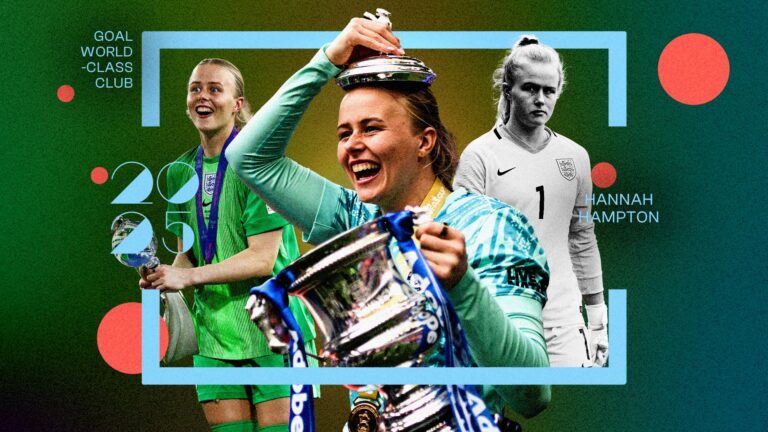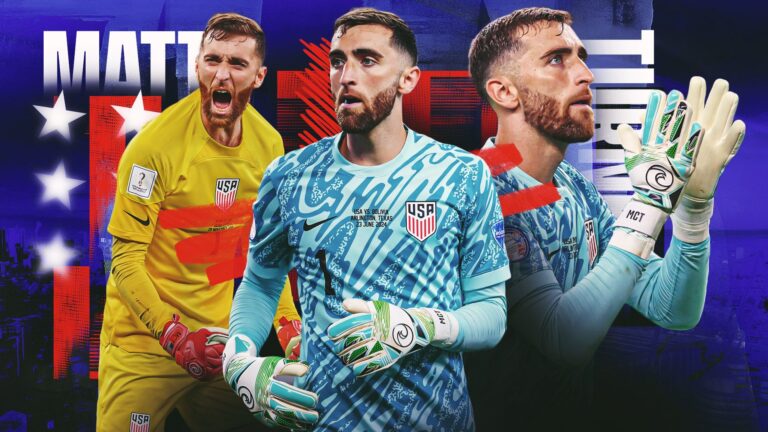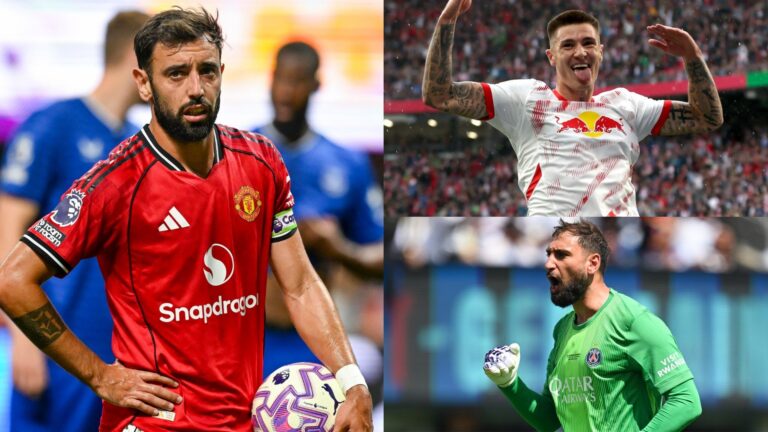Philip Zinckernagel told his wife this would be the last time. His list of former destinations reads like the ads on the wall of a European travel agent’s office: Copenhagen, Helsingor, London, the Arctic Circle, the central إنجلترا countryside, Athens, Liege, Bruges.
At each stop, the Danish attacking midfielder had signed a long-term contract, expecting an extended stay. Yet at each spot, he was out within 2 years. This time, he promised, things would be different.
“I’ve been moving around a lot, so I have a bit of practice at getting into new teams and settling down quickly. I promised my wife, this is the one we’re going to stay at,” he told بالجم.
This time, he is in Chicago landing in MLS at age 30, brought in as the Fire’s highly-paid TAM signing. But he is not alone in his profile as a player in الدوري الأمريكي لكرة القدم.
While the big-money, bigger-name stars who have played their craft at one club for years – think Lionel Messi, Sergio Busquets, Marco Reus – tend to grab the headlines, the more consistent European quality in the league comes from a multitude of Zinckernagels, journeymen talent that have never found a permanent home on the continent.
“I think it’s great. It is great to see a lot of European players want to come to MLS, now it’s a very attractive League,” Nashville’s Hany Mukhtar said.








Philip Zinckernagel told his wife this would be the last time. His list of former destinations reads like the ads on the wall of a European travel agent’s office: Copenhagen, Helsingor, London, the Arctic Circle, the central England countryside, Athens, Liege, Bruges.
At each stop, the Danish attacking midfielder had signed a long-term contract, expecting an extended stay. Yet at each spot, he was out within 2 years. This time, he promised, things would be different.
“I’ve been moving around a lot, so I have a bit of practice at getting into new teams and settling down quickly. I promised my wife, this is the one we’re going to stay at,” he told بالجم.
This time, he is in Chicago, landing in MLS at age 30, brought in as the Fire’s highly-paid TAM signing. But he is not alone in his profile as a player in Major League Soccer.
While the big-money, bigger-name stars who have played their craft at one club for years – think Lionel Messi, Sergio Busquets, Marco Reus – tend to grab the headlines, the more consistent European quality in the league comes from a multitude of Zinckernagels, journeymen talent that have never found a permanent home on the continent.
“I think it’s great. It is great to see a lot of European players want to come to MLS, now it’s a very attractive League,” Nashville’s Hany Mukhtar said.
It’s a smart segment to target for MLS clubs. Big-name designated players are expensive, generally older, and often come with big demands on short-term contracts. Academy talent is not quite ready – or might be sold off to Europe. The American college system is drying up. And although South America is certainly one frontier, there are plenty of Europeans heading into their prime at the right value to target from across the pond.
In fact, they have made up a fair portion of MLS All-Star rosters in recent years. The 2025 squad featured seven players who had practiced their craft at multiple European clubs before moving to the U.S. in their prime years. In 2024, five of a similar profile represented MLS. Four were named in 2024, including Maarten Paes, Mukhtar, Ryan Gauld and Evander.
Bigger signings, in recent years, have come from similar areas. Kevin Denkey was briefly the largest outlay in MLS history when نادي سينسيناتي لكرة القدم signed him last winter. The Togo international starred in the Belgian League.
Sam Surridge and Hany Mukhtar were significant expenditures for Nashville. Alexey Miranchuk and Hugo Cuypers were among the more expensive signings in league history – and have, for the most part, justified their price tags.
“This is a great place for us right now. And it’s been working out well so far,” Zinckernagel said.
Dig a little deeper, and the reality of MLS player acquisition is that it relies heavily on worldwide networks, conversations between players, and WhatsApp messages among teammates. Such was the case for San Diego’s Anders Dreyer. He was 27, and had eight different clubs on his resume.
Dreyer was unsure. He had enjoyed two successful years at Anderlecht and was named the team’s player of the season in 2024. And with two years left on his contract, he figured to stay for the foreseeable future. But an MLS offer came, and he energized his soccer-playing network.
“I knew quite a lot before coming over here… I spoke with Evander about it. I spoke to some of the Danish guys about it. For me, it was a no brainer, in the end,” Dreyer said.
It has worked, too. Chucky Lozano might grab the headlines for San Diego, but Dreyer is the heartbeat of the side, an All-Star, and has nine goals through the first half of the season.
Sam Surridge knows the struggle, too. The Nashville forward started his career at the بورنموث academy, but, like many in the English football pyramid, struggled to find a permanent home. Stops at Weymouth, Poole, Yeovil, Olham, Swansea, ستوك and, most recently, نوتنغهام فورست, meant that a career that had once included a flirtation with the English youth national teams was going awry.
He reached out to a few friends, and after Nashville pitched their project, he was sold. It didn’t matter that he couldn’t point to the city on a map, or didn’t have a clue what state they played in.
“I can’t lie. I didn’t know whereabouts it was,” he admitted. “Obviously, I’ve heard of Nashville. But yeah, it’s been, it’s an amazing city.”
The appeal of a new league, a new challenge, at the right age, was very apparent.
“Nashville came to me and was just a really exciting project,” he said. “And I felt like it was a growing League. There’s more people that have joined since I’ve been here as well.”
And after making the move, he, too, became a reference point for some who are looking for a shift abroad.
“I do get a lot of messages from people I played with asking what it’s like,” Surridge said. “And I think there’s a lot of players that maybe wish they came out, or want to come out, and it’s not as easy these days.”
Hany Mukhtar didn’t know what to expect. He was recruited by Hertha Berlin at 7, and after struggling to break into the first team, was sold to بنفيكا for just $750,000.
The Portuguese giants didn’t have room for him, either, and sent him on loan twice – first to RB Salzburg and then Brondby. He signed a four-year contract with the latter club, and made a fine career in the Danish league. At 24, there figured to be time for him to enjoy further success in الدنمارك, or even make a step back up to a top-five European league.
But then, the Nashville pitch came in. They were entering the league as an expansion franchise in 2020, and wanted Mukhtar to be their star.
He was confused – mostly because the team hadn’t kicked a ball yet.
“I talked to the GM,” he said, “and they were talking about their plans, bringing me into Nashville. He said ‘Hey, I want you to be the face of our club. I want you to be the guy on our team.’ It was funny, because I was the first DP and it was a completely different approach to what we were used to.”
But the appeal – and the trust – of having a team built around him, was enough of an attraction.
“You have these people who are planning the franchise, who are planning a club, and they see you as a big part of it,” Mukhtar said. “This is a huge honor that gives you even more motivation to work harder.”
This isn’t exactly a new concept, though. MLS clubs have found value in that archetype of player for years. For every Thierry Henry, coming to MLS at the twilight of his career, there is a Bradley Wright-Phillips, linking up with the New York Red Bulls at 28 – and plenty of soccer ahead of him.
At the time, he wasn’t quite sure what to expect. The Americanness of the league surprised him. He also had no clue how tough the MLS would end up being. Most of the league played with a bit of a chip on its shoulder. That was a tricky adjustment, but one he was up for.
“I think everybody disrespects America. So they disrespect MLS, in my رأي,” he told بالجم.
Some 126 MLS goals, two All Star appearances and three Supporters’ Shield trophies later, Wright-Phillips had established himself as a league legend.
Physically adjusting to the league is harder for some than for others. Dreyer is in the midst of his first season for San Diego, and has taken to the club immensely quickly.
“It was quite easy,” Dreyer said. “San Diego, it’s a new club and it’s not often you get that opportunity to be a part of a totally new club. But also the ثقافة and stuff like that.”
Zinckernagel has found Chicago fairly welcoming in his own right.
“I love Chicago. The city is great. The people are great. I love the team, and my wife is happy,” he said.
But others have needed time to adjust. Surridge didn’t immediately impress, and lived away from his family for half of the 2023 season. But now the familiar faces have arrived, and he has settled in the city a bit more, the goals have started to come.
“I think when I first came, I’d done really well, and it was almost like the novelty had worn off a bit,” he said. “And yeah, it was difficult moving, I can’t lie. But at the same time, at the start of last season, all my family came and, yeah, I felt a lot more comfortable around the players, around the scene.”
Evander is in a similar situation. He needed a few months, too, with the scale and diversity of the country serving as a barrier.
“You have difficult games, hard games, and the condition of traveling around the country, weather-wise, there’s a lot of difficulty that we need to deal with, and people on the outside don’t always realize that,” he said.
And then there are adjustments to be made to the uniqueness of the U.S. game. The All-Star Game is one of the most obvious oddities, as largely a US-only sporting tradition. Wright-Phillips, in his own words, did not care about being an All-Star when he first came to the league.
“I didn’t understand it. Obviously, I wasn’t used to the American theatrics, so I didn’t care about it,” he said.
But when the call-up came, his perception changed.
“As soon as I got called into it, I was buzzing, because it lets you know that you are the best in your position,” he said.
The Supporters’ Shield followed by MLS playoffs was also a point of confusion. Wright-Phillips, who played for a decade in England before moving to the U.S., simply couldn’t wrap his head around the fact that the best team over the course of seven months wouldn’t, ultimately, be the team lifting the trophy that everyone covets at the end of the season.
He still doesn’t get it.
“I won the Shield a few times, and to go again in the playoffs… you’re gonna tell me something’s more important than being the best team in a regular season? It’s hard to get your head around,” he said.
For Zinckernagel, it was easy in the end. A combination of factors made his decision happen. He liked Chicago. The team’s coach, Gregg Berhalter – given his experience around the USMNT and time spent in the league – was a bonus.
“Coming in from the national team, keeping the standards high and just, you know, expecting more from us,” Zinckernagel said. “He is very demanding, and I think that’s what this group needed. We’re still a new group and a lot of our players are new. But we definitely have a lot of quality, and then hopefully we can build something.”
It helped, too, that the Fire had been aggressive in the transfer market, and were looking to spend and show ambition. He knew, too, that he had that extra bit of technical quality – and perhaps the necessary grit – to find some place he could finally settle.
It may not be a European stamp in his passport, but MLS might just serve as a long-term home for a player who had never quite panned out – yet has plenty of football to offer. He’s not the only one.
“In 2020, a lot of old German teammates were sending messages like ‘Hey, why America? Why did you go to MLS?’ “ Mukhtar said. “And now, a couple years forward, they’re texting me like, ‘Hey, do you think I can come to the MLS?’”









